The Painted Snipe, a captivating species within the Rostratulidae family, stands out in the avian world for its distinctive beauty and intriguing behaviors.
Despite their nocturnal habits and secretive nature, these birds are gems hidden within wetland habitats across Africa, Asia, and Australia.
Their adaptation to life at the water’s edge, with long legs and broad bills for foraging, showcases their remarkable survival skills.
However, it’s their reversed sexual dimorphism and unique breeding behavior that truly sets them apart.
With females sporting vivid plumage and assuming the role of courting multiple mates while males incubate eggs and care for chicks, Painted-Snipes offer a rare glimpse into the complexities of avian life, captivating both ornithologists and nature enthusiasts alike.
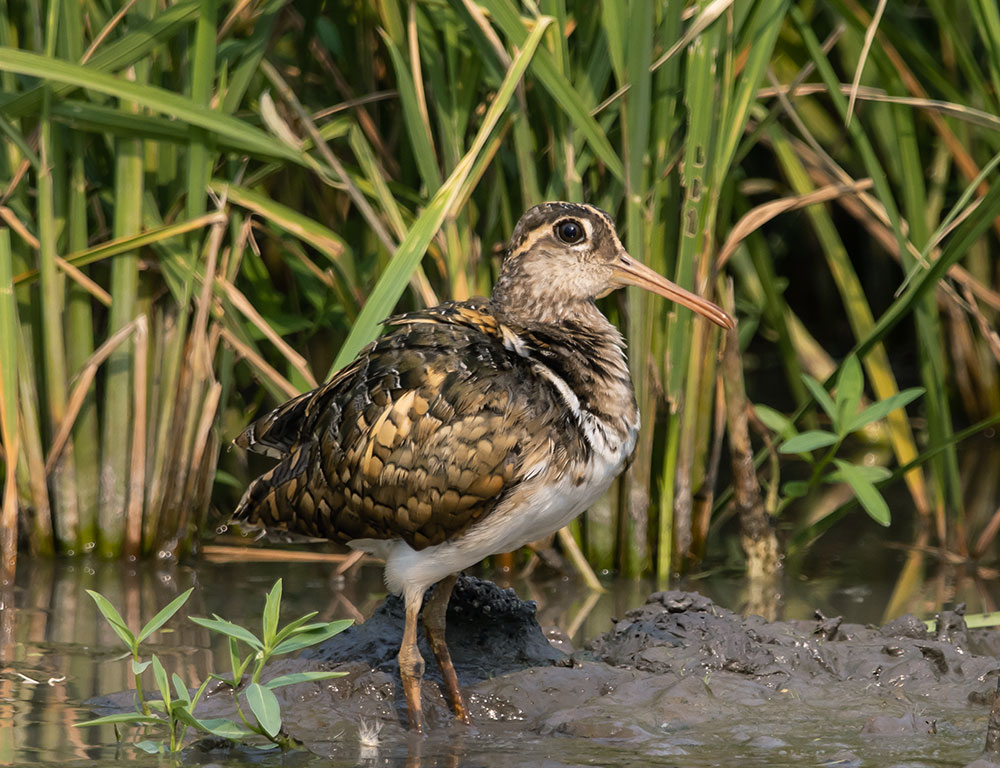
Physical Characteristics of Painted-Snipes
Painted Snipes possess a unique charm from their unusual physical traits, particularly their remarkable sexual dimorphism.
Here’s a closer examination of their physical characteristics:
Size
Painted snipes measure approximately 25 cm (10 inches) in length. They are characterized by brown and white coloration, with the Old World species featuring distinct yellowish “spectacles” around the eyes.
Bill
One of the most striking features of Painted-Snipes is their long and slightly drooping bill. This specialized bill is adapted for probing soft mud and shallow waters in wetland habitats, where they primarily feed on small invertebrates.
Head
The head of a Painted Snipe is typically brownish, with a hint of green or yellow sheen. This subtle iridescence adds to its visual appeal and makes it stand out in its wetland surroundings.
Back and Wings
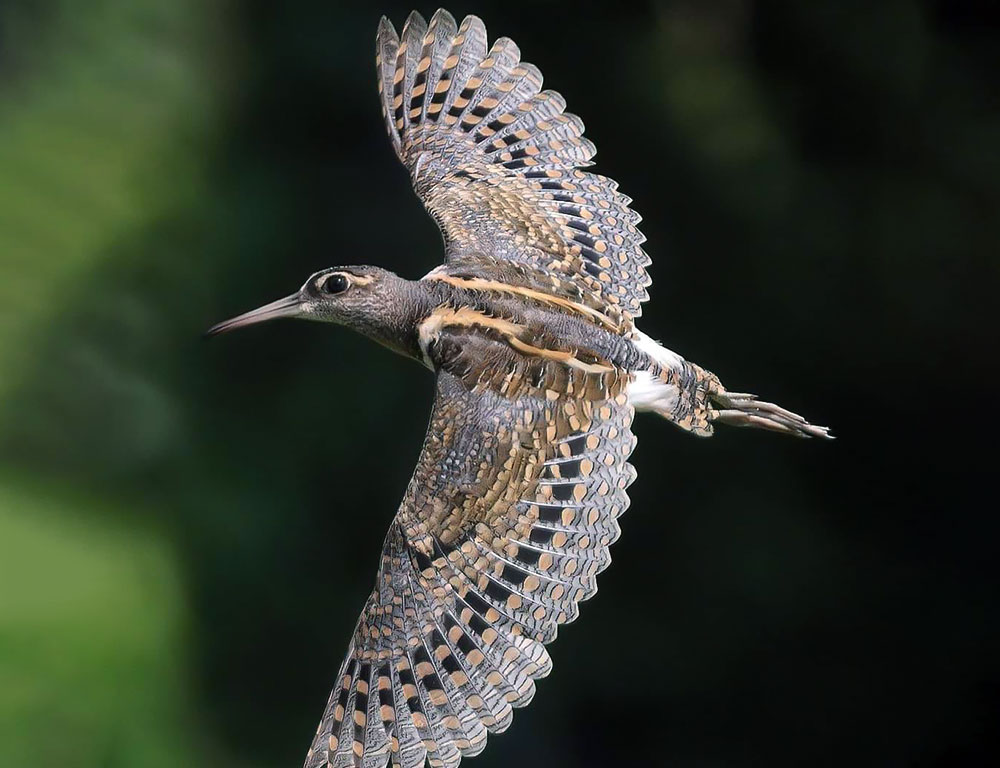
The back and wings of Painted-Snipes are adorned with a combination of golden brown coloration and black or white markings. These markings create intricate patterns that contribute to their overall attractiveness.
Underparts
Painted-Snipes’ underparts are usually whitish-grey or pale brown, providing camouflage against the backdrop of their wetland habitats.
Sexual Dimorphism
Painted-Snipes exhibit reversed sexual dimorphism, with females displaying more vivid and colorful plumage than males. This characteristic is uncommon among bird species and contributes to their distinctiveness.
Habitat and Distribution of Painted-Snipes
Painted-Snipes are highly adaptable birds with a widespread distribution across various continents, primarily inhabiting wetland environments.
Here’s a detailed overview of their habitat and distribution:
Habitat
Painted-Snipes are versatile in their habitat preferences, occupying a range of wetland environments including freshwater and brackish wetlands, marshes, rice fields, and riverbanks.
They are well-adapted to these habitats, utilizing their long legs to wade through shallow waters and specialized bills to probe for food in soft mud.
Global Distribution
- Greater Painted-Snipe (Rostratula benghalensis): This species has a broad distribution, stretching from Africa through India to Southeast Asia. They are found in various wetland habitats across these regions, including marshes, ponds, and flooded grasslands.
- Australian Painted-Snipe (Rostratula australis): As the name suggests, this species is primarily confined to Australia. They inhabit wetland areas such as freshwater and brackish marshes, billabongs, and swamps.
- Lesser Painted-Snipe (Rostratula capensis): The Lesser Painted-Snipe is primarily found in sub-Saharan Africa. It inhabits wetland areas such as marshes, floodplains, and shallow ponds in countries such as South Africa, Kenya, and Tanzania.
Migration
Painted-Snipes are generally non-migratory birds, preferring to remain in their local habitats throughout the year. However, they may undertake short-distance movements in response to changes in water levels or food availability within their range.
Population Estimates
Population estimates for Painted Snipes vary among species. The Greater Painted Snipe is estimated to have a global population ranging from 25,000 to 100,000 individuals.
In contrast, the Australian Painted-Snipe has a much lower population, with only around 1,000 to 2,000 individuals reported.
Population data for the Lesser Painted-Snipe is less well-documented but estimated to 25,000 to 100,000 individuals.
Behavior and Diet of Painted-Snipes
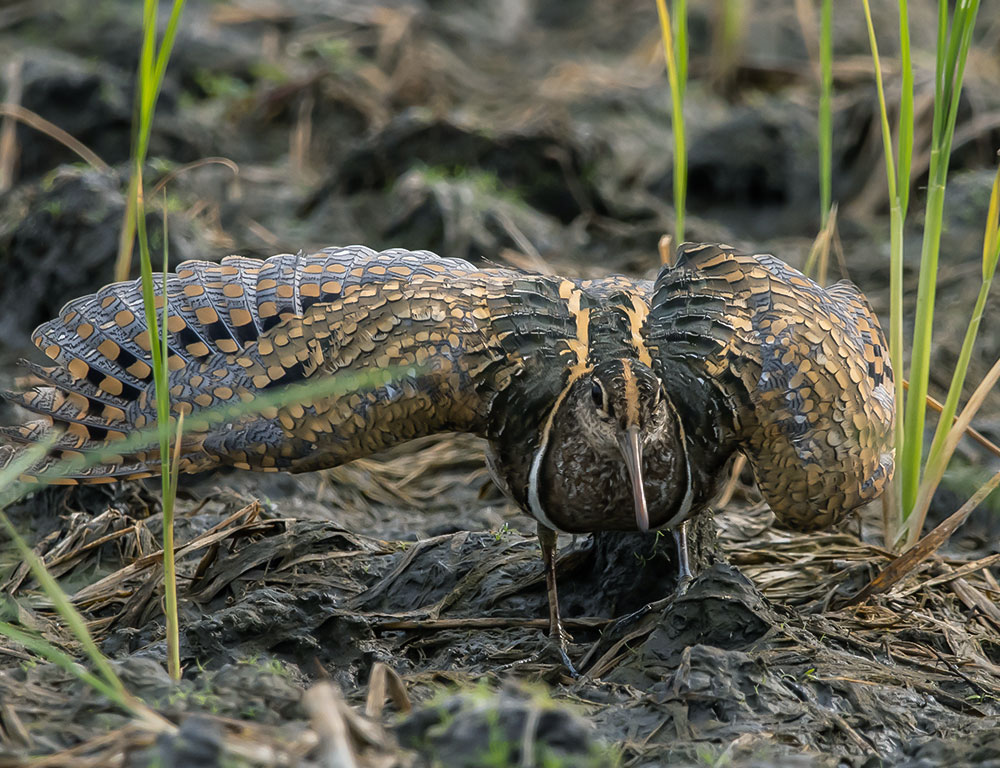
Painted-Snipes possess fascinating behavioral patterns and dietary preferences that set them apart from other bird species.
Here’s a closer look at their behavior and diet:
Nocturnal Foraging
Painted-Snipes are primarily nocturnal creatures, relying on the cover of darkness to forage for food and navigate their habitats. During the day, they prefer to remain concealed in dense vegetation near water bodies, minimizing their exposure to predators.
Courtship and Territoriality
An intriguing aspect of Painted-Snipe behavior is the reversal of traditional gender roles in courtship and territorial defense. Typically, females court males and defend territories, exhibiting larger bodies and more vivid plumage than males.
This role reversal is uncommon among bird species and adds to the uniqueness of Painted Snipes.
Dietary Preferences
Painted-Snipes are not selective feeders and primarily consume small arthropods found in their wetland habitats. These include insects, crustaceans, and mollusks.
They use their long bills to probe soft mud and shallow waters for prey, a behavior commonly observed during their active hours at night. Additionally, they may consume seeds opportunistically when available.
Breeding Behavior
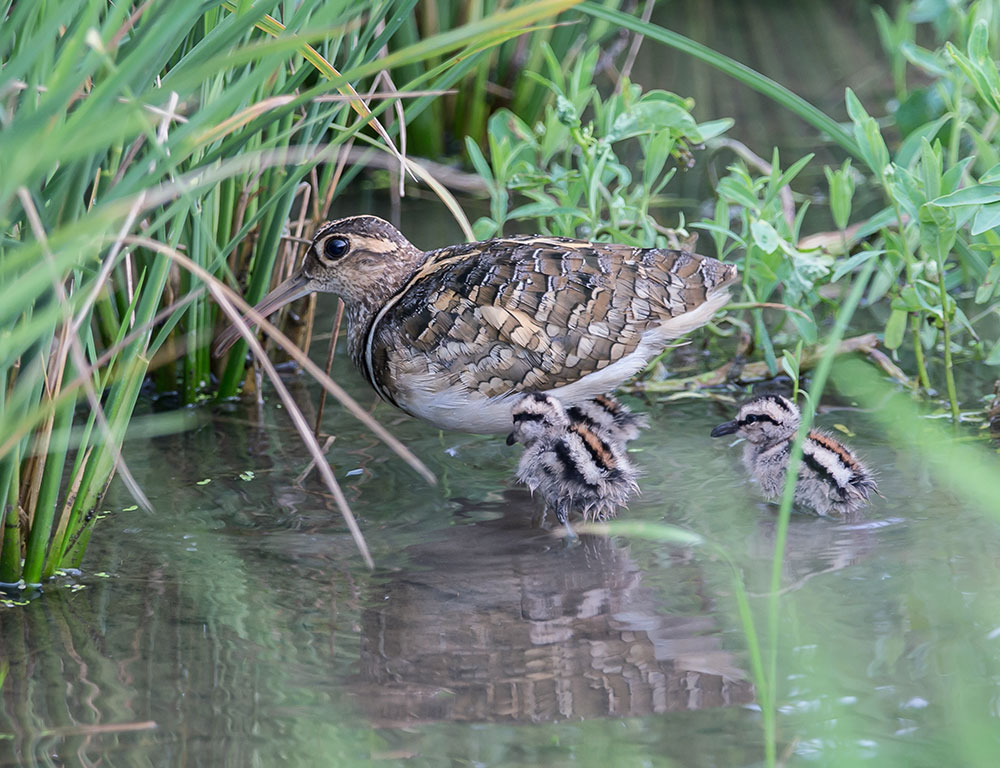
Painted-Snipes exhibit an intriguing breeding strategy where females lay their eggs within nests constructed by males.
After laying the eggs, females may move on to find another mate, while males are responsible for incubating the eggs and caring for the chicks once they hatch.
This unusual approach to parental care is uncommon among bird species and adds to the complexity of Painted-Snipe behavior.
Conservation Status of Painted-Snipes
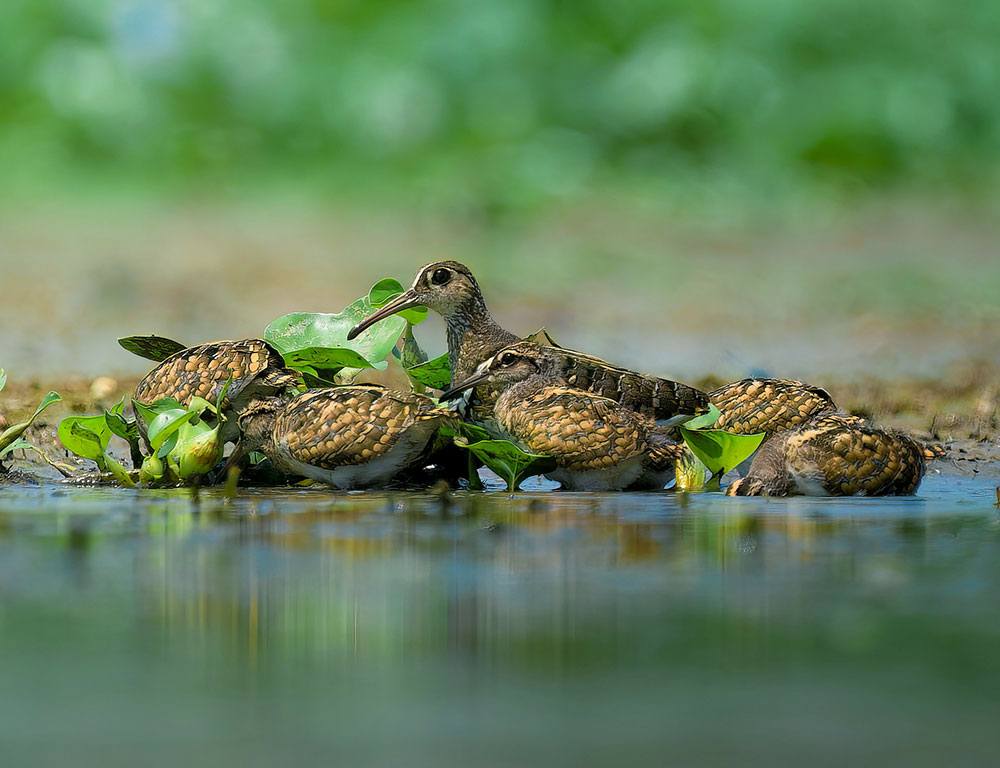
The painted snipe, including the Old World species Rostratula benghalensis, is classified as Least Concern by the IUCN Red List. This designation indicates that the species faces no immediate threat of extinction.
However, continuous monitoring of their habitats and populations is necessary to ensure their conservation in the long term.
Conclusion
The Painted Snipe, with its captivating physical features and unconventional behavioral patterns, is a fascinating study in avian biology. Its vivid plumage and role-reversed gender dynamics challenge traditional norms, providing insights into evolutionary adaptations.
Spanning diverse continents, from Asian wetlands to African marshes, underscores global conservation efforts’ importance. Despite its widespread distribution, habitat loss and hunting threaten its survival.
With estimated populations varying across continents, conservation initiatives are imperative to safeguard this species and its contribution to biodiversity.
As stewards of nature, we are reminded of the importance of understanding and preserving such unique creatures. Each embodies a story that enriches our understanding of life on Earth.
| Continent | Estimated Population |
| Africa | 10,000 – 25,000 |
| Asia | 5,000 – 10,000 |